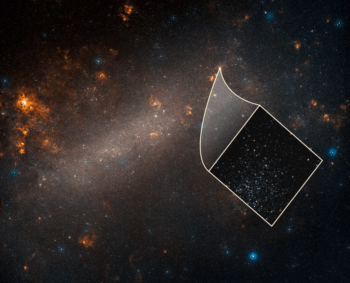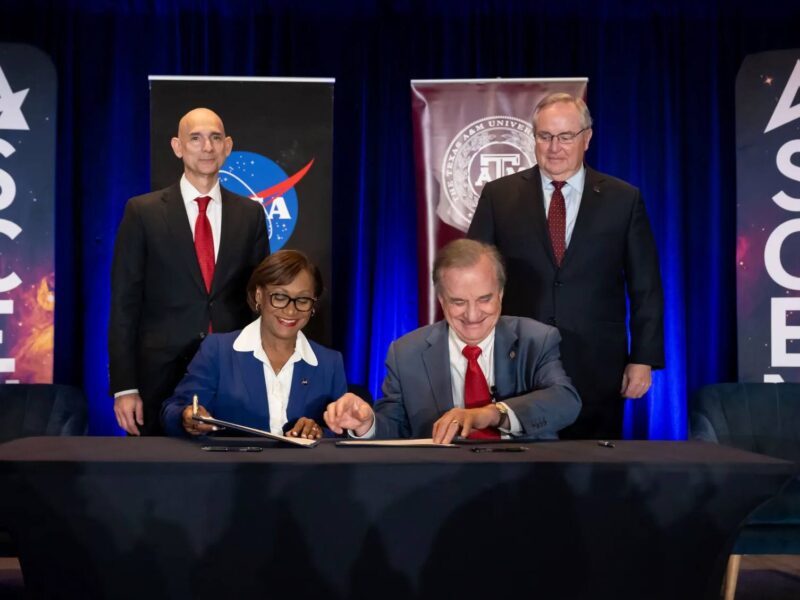Are New Physics Needed To Explain Discrepancy In Universe’s Expansion Rate Measurement?

A team of astronomers that includes Texas A&M University professor Lucas Macri and recent Texas A&M astronomy Ph.D. graduate Wenlong Yuan has used new data from the Hubble Space Telescope to make the best-ever measurement of the expansion rate of the universe, with a total uncertainty of only 1.9 percent.
The team’s measurement, detailed in a recent paper posted to arXiv and accepted for publication in The Astrophysical Journal, is 9.8 percent larger than the value predicted from observations of the big bang, even after taking into account the contributions of dark matter and dark energy.
“Such a large discrepancy between measurement and prediction should only happen by chance less than once in 100,000 experiments, further strengthening the case for yet another unseen component of our universe,” Macri said.
In order to extract the most precise and accurate measurements out of the Hubble observations, the team relied on the results of an independent, National Science Foundation-funded study carried out by Macri and colleagues and published in The Astronomical Journal in 2015. They used an NSF-supported 1.5-meter telescope at Cerro Tololo Inter-American Observatory in Chile to measure the periodic changes in the near-infrared brightness of Cepheid variables located within the Large Magellanic Cloud. Texas A&M physics major Salma Mahzooni ’10 contributed to the early analysis of the images as part of her Honors thesis.
The surprising result represents the most recent advance in a thus-far 14-year study by the SH0ES (Supernova Ho for the Equation of State) Team, founded in 2005 by Nobel Laureate Adam Riess of the Space Telescope Science Institute and The Johns Hopkins University and Macri, a professor in the Texas A&M Department of Physics and Astronomyand member of the George P. and Cynthia Woods Mitchell Institute for Fundamental Physics and Astronomy since 2008. The project aims to improve the measurement of the current expansion rate of the universe — known as the Hubble constant or Ho after Edwin Hubble, who first measured the expansion of the universe nearly a century ago — to a level of accuracy and precision that allows a better understanding of its composition and ultimate fate.
Macri notes that the SH0ES team has a strong Texas A&M heritage beyond his role as a founding member. Both Yuan ’16 and Dr. Samantha Hoffmann ’13 contributed to the project as part of their Ph.D. theses and later as postdoctoral fellows at Johns Hopkins under the joint supervision of Riess and Macri.
“When we started the SH0ES project, I had just published a paper measuring the local expansion of the universe with a total uncertainty of 8 percent, which was the best measurement to date,” Macri said. “Thanks to our efforts and the hard work of many colleagues over the past dozen years, we have improved that measurement by more than a factor of four.”
Before Hubble was launched in 1990, the estimates of the Hubble constant varied by a factor of two. In the late 1990s, the Hubble Space Telescope Key Project on the Extragalactic Distance Scale (of which Macri was a junior member) refined the value of the Hubble constant to within an error of only 10 percent, accomplishing one of the telescope’s key goals.
“We set out on this path to better understand dark energy, but to everyone’s surprise, including our own, we seem to have stumbled upon a new dark component of the universe,” Macri said. “We are about two years away from reaching the critical 5-sigma significance that is the hallmark of a discovery in physics — 1 in 3.5 million of this result being due to chance.”
Read more on today’s announcement via the official STScI press release.
To learn more about Macri’s research or Texas A&M astronomy, go to http://astronomy.tamu.edu.
This story by Shana K. Hutchins originally appeared on the College of Science website.





